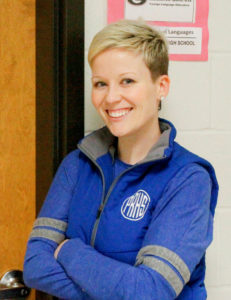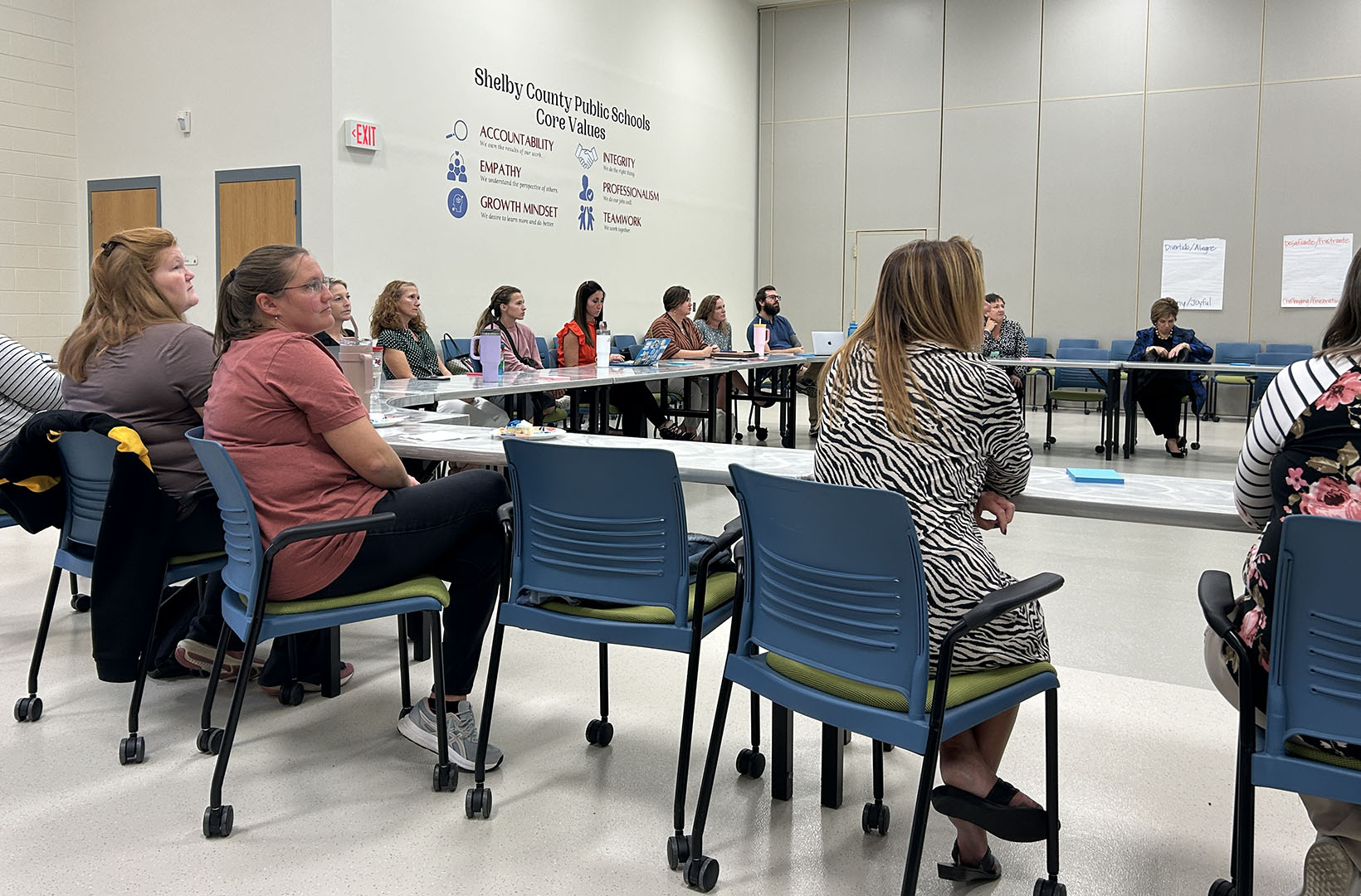This is the first in a series of four articles that will highlight (and “hack”) the American Council on the Teaching Foreign Languages’ (ACTFL) six core practices in the context of actual classrooms. These Core Practice Hacks are meant to guide both planning and instruction. In each will be ideas, examples and reflection points for us, as teachers, to get R.E.A.L. about what’s going on in our classrooms. R.E.A.L. stands for the process of reflect, energize, assess and lead.
Read the series:
- Core practice hacks: Planning, assessment and feedback
- Core practice hacks: Tips and tools for engaging students
Teaching in 2018 is not for the faint of heart, mind or stamina. As teachers, we are pulled in countless directions when it comes to staying afloat in the paperwork and logistical tasks, not to mention the planning, instruction, accommodations, modifications, assessment, collaboration, professional development and more.

Meredith White
This workload can easily be overwhelming, yet it ultimately boils down to one main question: How do we make our classroom instruction the best it can possibly be? We need to learn and trust the process of language acquisition, and we also need to get R.E.A.L. with ourselves. Getting R.E.A.L. means pulling back the figurative curtain, bracing for impact and looking at our classroom experience through a lens other than our own.
When I began to get R.E.A.L. with myself, I first focused on how much I was (or wasn’t) actually staying in the target language. To that end, I started video recording myself twice a week, varying the class but not the length: the entire class period, every time. ACTFL and many districts say 90 percent of classroom time should be spent in the target language, with 10 percent in English. If teachers ever want a wake-up call, for better or worse, recording themselves is the ticket.
Many other highly-trained professionals (doctors, professional athletes and architects) watch themselves work (surgeries, game films and project progression compilations, respectively), yet teachers often do not. It is very common for teacher certification programs to include video recording a class, followed by a reflection assignment. For many, as it was for me in my undergraduate education program, that is the only time.
Because teaching is so personal, it can be hard to watch ourselves do it. I definitely was not watching myself teach, nor did I want to. Doing so retrained my brain and undid the narrative that it was embarrassing, silly or pointless. Rather, watching myself teach became the most valuable thing I have ever done for the betterment of my teaching.
Once I started recording regularly, I saw that many logistical issues were not because I was doing something wrong, rather, I was setting myself up for failure. For example, I had been frustrated at the number of students who would crowd the doorway and cause others to arrive at or after the bell. There also seemed to be a domino effect. Students would not get started on the anticipatory set right away, the noise level would increase and class would stall.
The changes were simple. After watching it unfold before my eyes on the recording, I saw that I was putting everything that students needed right next to the door. If they needed tissues, pencils, absence handouts or the pencil sharpener, they had to go to the supply table placed next to the door. A swift, next-day supply relocation made it so that students did not crowd the doorway and had designated spots for student materials. Immediately, they did not have to all gather in the same spot for the same materials and class started more peacefully and quickly. If I had not seen my class unfold, outside of living it in real time, I would not have seen so obviously that my frustration stemmed from a systems problem.
Most importantly, I noticed much to my chagrin my target language use (or lack thereof). I was not using the target language in many situations where I easily could have been and definitely should have been. As I watched, I kept a stopwatch and tracked when I started in the language and when I stopped. At the end of the class, I then had a minute count. After two weeks’ worth, four videos, I averaged them. I was in Spanish roughly 35 percent of the time – outright unacceptable.
After the shock and embarrassment wore off, I went back and watched the videos again (think athletes watching game films for mechanics, slight tweaks and simple mistakes). This time, I was looking for what I could have said in Spanish easily with cognates and emphasis that I was not. There was so much, and suddenly I was inspired with hope and optimism.
I designated an average-performing, alert student in each class to keep me in check. Armed with a little bell, she or he rang the bell when I reverted into English and could have used Spanish in a way that the class would have understood. As it turns out, the students wanted more Spanish, just like I did. It was truly surprising to see what they believed (correctly) would have been understandable.
In reflecting, I also realized that 90 percent goal can be intimidating. When I started being really selective about the 10 percent I was speaking in English, it was immediately more manageable. For me, it was a lot simpler to be choosy about how I will use my 10 percent – which amounts to five minutes or so in a 50-minute class period, nine in block scheduling.
Again, I had to get R.E.A.L., facing reality and reflecting on what was already happening, getting energized with my class’ potential, assessing how I would go about improving the issues I had observed, and leading by example for my students and colleagues.
Once my target language use increased, interpersonal communication tasks became noticeably easier. Before, it was like pulling teeth sometimes to keep students in Spanish. After I had begun really modeling it and focusing on being comprehensible, we could take those tasks further from grammar-based, out-of-context exercises and up the ante into communicative, authentic and functional tasks.
Before I started video recording my classes, I did not realize how many activities I was assigning and minutes I was filling. Students were not completing authentic tasks. It was as if we were a baseball team, warming up and stretching for the duration of practice, never getting to play actual baseball or schedule any games. I was not providing authentic contexts, tasks or resources at all. If I had not forced myself to watch myself, I do not know how long it would have taken me to (quite literally) see what was really going on.
Taking a hard, honest look at what was going on in my classroom via recording and therefore forcing myself to get R.E.A.L. made an invaluable difference on my planning, instruction, assessment and management, in that order. The next in our Spring Core Practice Hacks series will feature ideas for planning, feedback and subsequent reflection.
Meredith White teaches Spanish at Peachtree Ridge High School (Gwinnett County Public Schools), in Suwanee, Ga. She is on the Executive Board of the Southern Conference On Language Teaching (SCOLT), and she serves as its program co-director and social media coordinator. In addition, she is a doctoral student, #Langchat moderator, and Path2Proficiency blogger.



Thank you for sharing! I love the idea of watching yourself on tape and not only looking at the lesson and time in target language but also how to fix time on task with logistical issues. Mil gracias…
This is great, M. I recorded myself a ton when I did National Boards. It was such an eye opener! What a great way to start the reflective process on this year and still make changes before summer that will definitely impact students. Thanks for being brave enough to share your personal reflection and being a wonderful example of how to grow!!